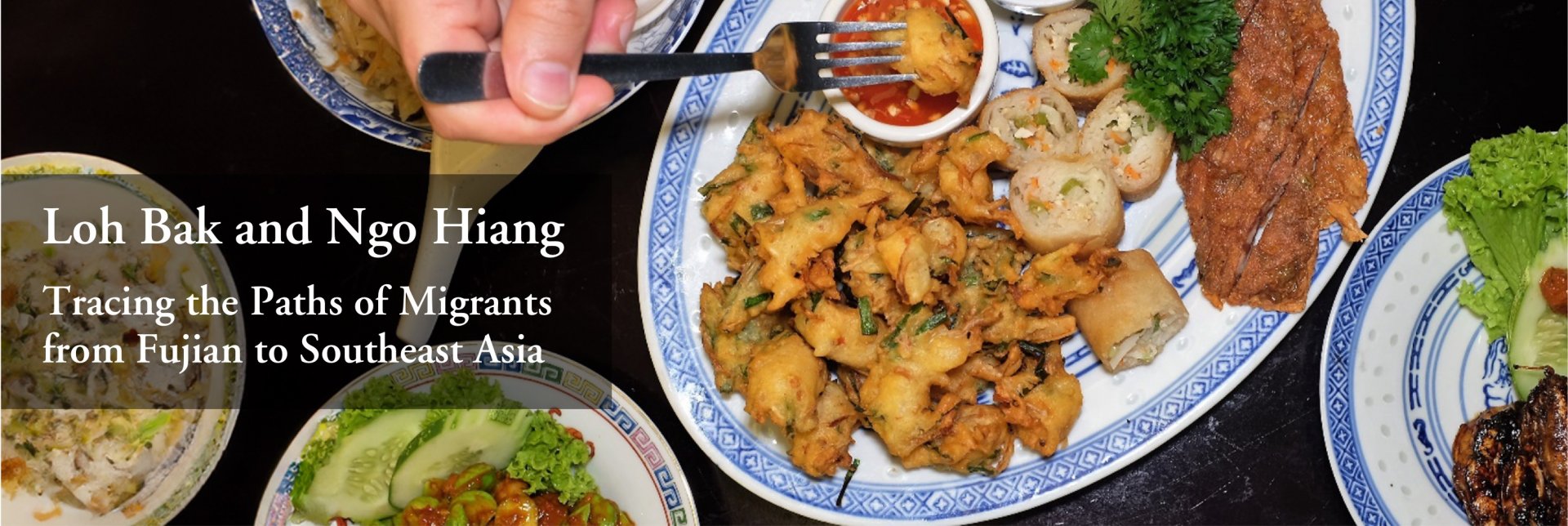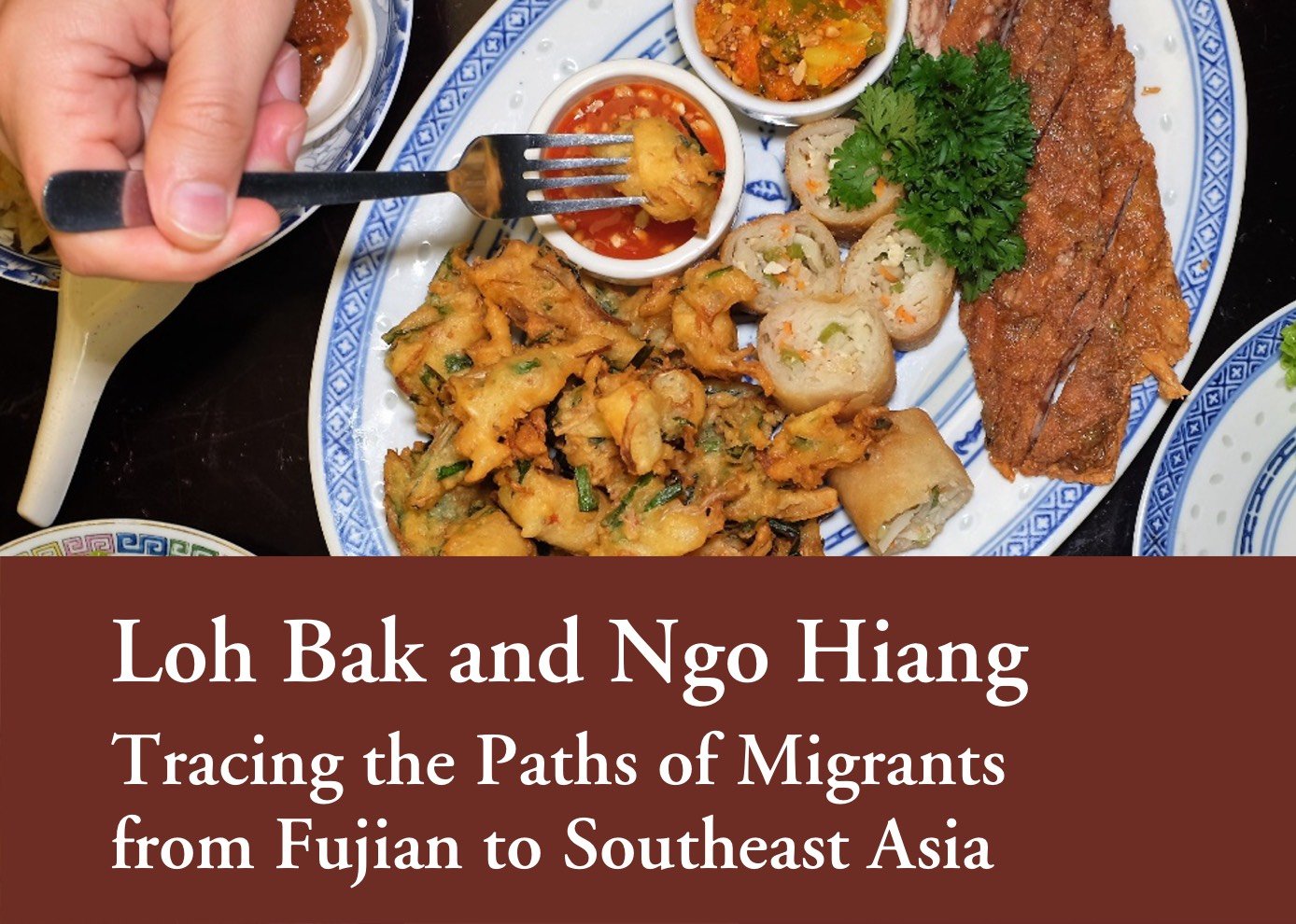Loh Bak and Ngo Hiang:
Tracing the Paths of Migrants from Fujian to Southeast Asia
When migrants resettle abroad for work, they take their culinary heritage along with them wherever they go. Traditional flavors adapt and find a new lease of life in their new hometowns. A classic example is Nyonya cuisine (also known as Peranakan cuisine), which is one of the most representative foods in Southeast Asia. Most of the ethnic Chinese in Southeast Asia are descendants of immigrants from the provinces of Fujian and Guangdong. Hence, Nyonya cuisine is a product arising from the fusion of flavors from Chinese cooking (in particular, Hokkien, Teochew, Cantonese, and Hakka culinary styles) and Malay cooking styles. Apart from brand new dishes, Nyonya cuisine also includes classic dishes which these immigrants brought along with them. However, new names were often bestowed upon these classic dishes. While there are many Hokkien speakers in Southeast Asia, these Hokkien speakers did experience some obstacles when purchasing food. This is because some dishes obtained a new name when the migrants brought them to a new place. For instance, braised pork (滷肉,Loh Bak) in Penang, Malaysia, became known as “five spices” (五香,Ngo Hiang) when it arrived in Singapore.
Whether it is called “Loh Bak” or “Ngo Hiang”, this dish that is wrapped with lace fat (though bean curd skin is used more often now) and then deep-fried traces its origin to the Fujian region, and is an authentic Southern Fujian (Hokkien) dish. Its existence is a testimony of how the earlier generations treasure resources and food. Lace fat (pork lace fat) is the layer of fat between the stomach and pancreas of pigs, and lacks economic value. Nonetheless, since lace fat is easy to wrap over ingredients, people in the olden days used them as a wrap before frying and consuming them. Originally, the most commonly used names for this dish in Fujian are “five spices (Ngo Hiang) wrap” (五香卷)and “five spices (Ngo Hiang) meat wrap” (五香肉卷). From this, we can deduce why it is called “Ngo Hiang” in Singapore. Furthermore, the reason why it got this name is because of five spice (Ngo Hiang) powder, which is the main and most important seasoning for this dish. When immigrants from Southern China brought five spice powder into Southeast Asia, it became an important ingredient in Southeast Asian cooking. For instance, the five-spice powder sold in Penang’s Pok Oy Thong, a traditional Chinese medicinal shop, is very popular and highly sought-after. The name “Ngo Hiang” (five spices) is closest to its original name in Fujian — “five spices wrap” or “five spices meat wrap”.
However, it is more challenging to comprehend why it is called “Loh Bak” (braised pork) in Penang. It is believed that in the past, this meat wrap would be served with the sauce that is also used in another popular Hokkien dish, Lor Mee (braised noodles), and hence the name “Loh Bak”. At present, most stalls in Penang that sell Lor Mee will also sell Loh Bak as a side dish. However, stalls that solely sell Loh Bak without Lor Mee will not provide any special dipping sauce.
 You can find “Loh Bak” not only in food stand, but also in restaurant
You can find “Loh Bak” not only in food stand, but also in restaurantThe picture shows the “Loh Bak” platter of the famous Nyonya cuisine restaurant - Auntie Gaik Lean's Old School Eatery
 The Nyonya delicacy prepared by Aunt Beh Gaik Lean of Auntie Gaik Lean's Old School Eatery
The Nyonya delicacy prepared by Aunt Beh Gaik Lean of Auntie Gaik Lean's Old School Eatery“Loh bak” and “Ngo Hiang” represent the different historical trajectories of this dish. Eating “Loh Bak” and “Ngo Hiang” in Southeast Asia is akin to reliving a page in the history of the early Chinese immigrants in Southeast Asia. The new lease of life given to Hokkien, Teochew, and Cantonese dishes bears witness to the perseverance of the early migrants from China who settled in Southeast Asia. The way these dishes interacted with the local culture and flavours, and took root in Southeast Asia, is also a testimony of the welcoming embrace of the local inhabitants. Furthermore, beneath these dishes belies the tenacity and grit of the Chinese immigrants who left everything behind and traversed mountains and seas and resettled in this new home of theirs.
All articles/videos are prohibited from reproducing without the permission of the copyright holder.







Welcome to leave a message:
Please Sign In/Sign Up as a member and leave a message